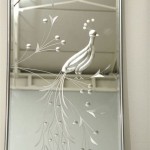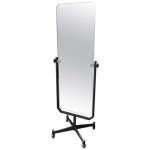Can You Mirror iPhone to Mac Without Wi-Fi?
Mirroring an iPhone screen to a Mac typically relies on a shared Wi-Fi network for communication. This allows for a seamless and relatively lag-free experience using technologies like AirPlay. However, situations may arise where Wi-Fi is unavailable or unreliable. This article explores alternative methods for mirroring an iPhone to a Mac without relying on a Wi-Fi connection.
Using a USB Connection and QuickTime Player
One of the most reliable methods to mirror an iPhone to a Mac without Wi-Fi is using a direct USB connection and QuickTime Player. This method leverages the wired connection for data transfer, resulting in a stable and generally higher-quality mirroring experience compared to wireless solutions. The steps involved are straightforward:
1. Connect the iPhone to the Mac using a Lightning to USB cable.
2. Open QuickTime Player on the Mac.
3. Select "New Movie Recording" from the File menu.
4. Click the dropdown arrow next to the record button and choose the iPhone as the camera and microphone input.
5. The iPhone's screen will then be mirrored on the Mac's display.
Leveraging Peer-to-Peer AirPlay
While AirPlay traditionally relies on a Wi-Fi network, it also supports peer-to-peer connections. This allows devices to communicate directly with each other without needing a central Wi-Fi router. This method is particularly useful in environments where Wi-Fi is unavailable or restricted. The following steps outline the process:
1. Ensure both the iPhone and Mac have Bluetooth and Wi-Fi enabled.
2. Even though a Wi-Fi network isn't required, having Wi-Fi enabled facilitates the initial device discovery.
3. On the iPhone, access the Control Center.
4. Tap the "Screen Mirroring" option.
5. Select the Mac from the list of available devices.
6. The iPhone's screen should now be mirrored on the Mac.
Note: Peer-to-peer AirPlay performance can be affected by the distance between devices and potential interference from other Bluetooth or Wi-Fi signals.
Utilizing Third-Party Software Solutions
Various third-party software applications offer screen mirroring capabilities without relying on Wi-Fi. These programs often utilize USB connections for data transfer and provide additional features beyond basic screen mirroring. When considering such software, it's important to research its reliability and security before installing it. Some prominent features often include:
1. High-quality video and audio streaming.
2. Recording capabilities.
3. Customizable settings for resolution and performance.
4. Enhanced stability compared to some wireless methods.
5. Potential for additional device support beyond Apple products.
6. Some applications might offer features like remote control of the mirrored device.
7. Others may provide options for annotations and drawing directly on the mirrored screen.
8. Consider the specific features offered by different software solutions before choosing one that aligns with your needs.
9. Always download such software from reputable sources to avoid potential security risks.
Understanding the Limitations of Mirroring without Wi-Fi
While the methods described above provide alternatives to Wi-Fi-based mirroring, they come with certain limitations. Understanding these limitations is crucial for selecting the most appropriate approach.
1. USB connections require physical proximity between the devices. This can restrict movement and flexibility.
2. Peer-to-peer AirPlay, though wireless, can be affected by interference and distance limitations compared to traditional AirPlay.
3. Third-party software solutions may introduce compatibility issues or require specific system configurations.
4. Performance, particularly latency and resolution, might be affected depending on the chosen method and the hardware capabilities of the devices involved.
Choosing the Right Method
The optimal method for mirroring an iPhone to a Mac without Wi-Fi depends on the specific requirements of the situation. Factors to consider include the availability of a USB cable, the desired level of mobility, the importance of high-quality mirroring, and the user's comfort level with installing third-party software. If a stable and high-quality connection is paramount, a USB connection and QuickTime Player are generally recommended. For situations requiring more flexibility, peer-to-peer AirPlay or a reputable third-party software solution may be more suitable.

How To Mirror Iphone Mac Without Wi Fi

How To Mirror Iphone Mac Without Wi Fi

How To Mirror Iphone Mac Wirelessly Full Guide

4 Ways How To Mirror Iphone Mac Without Wifi Airdroid

How To Mirror Iphone Mac Without Wi Fi

How To Mirror Iphone Mac Wirelessly Full Guide

How To Mirror Iphone Mac Without Wi Fi

How To Mirror Iphone Mac Without Wi Fi

4 Ways How To Mirror Iphone Mac Without Wifi Airdroid

Best Ways To Mirror Iphone Pc Via Usb Without Wifi








